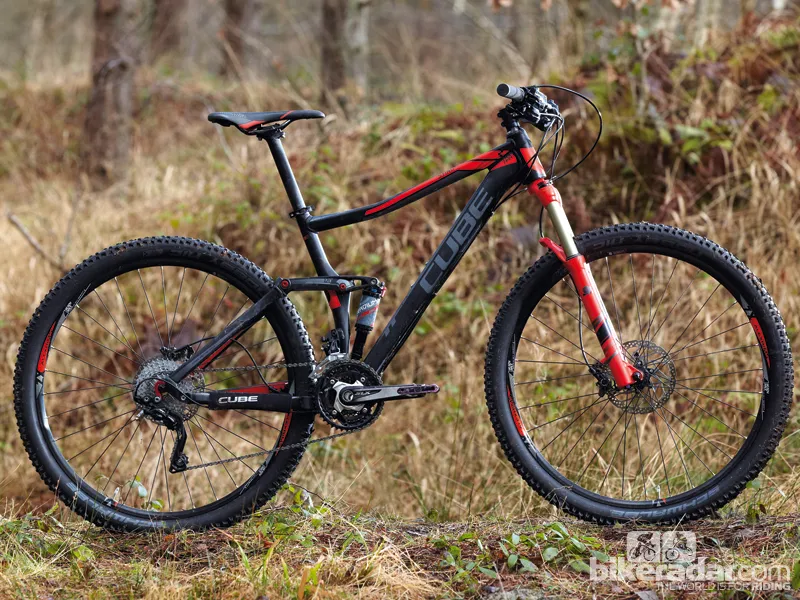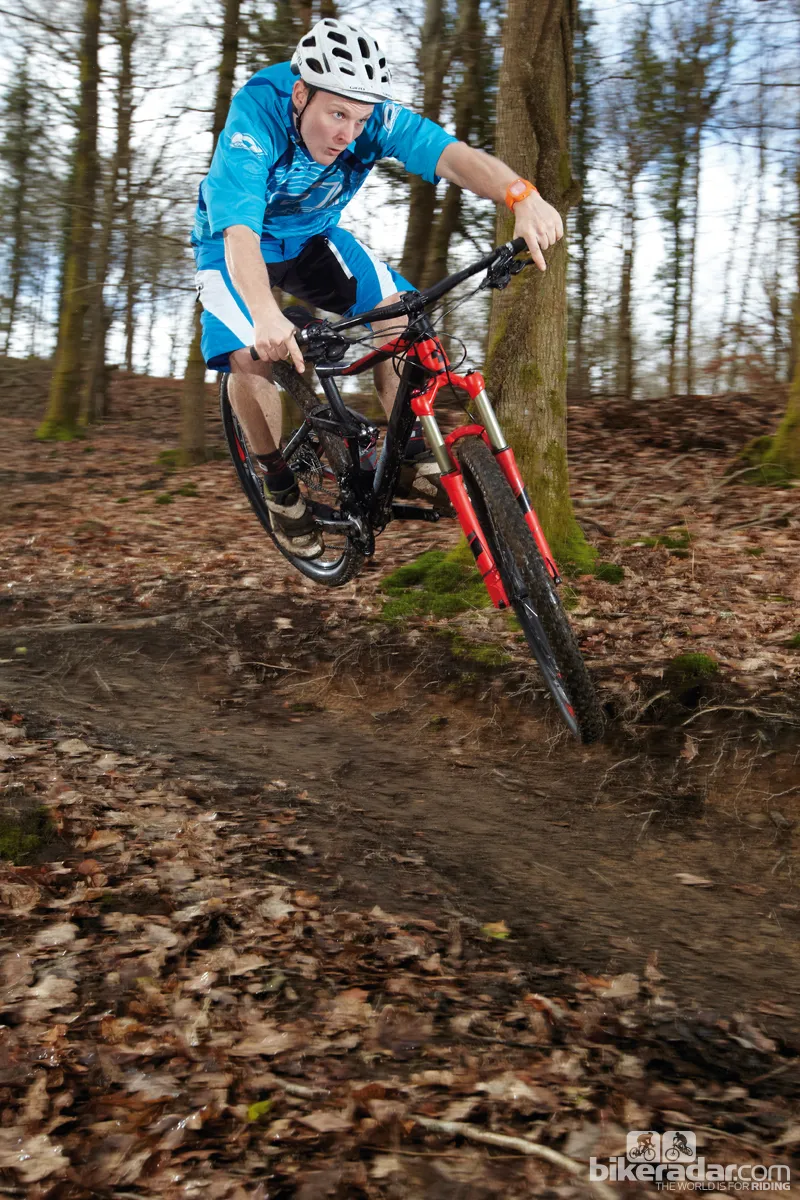New for 2014, Cube’s entry-level mid-travel trail blaster gets big wheels – and a ground-up redesign to accommodate them. Eschewing a 650b compromise in favour of the proven easy rolling of 29er hoops, the Sting 120 29 also packs in matching Manitou air springs front and rear and an SLX and XT based component package that looks like a misprint at this price.
Frame and equipment: clever design, generous spec
Cube has gone all out for versatility with the Sting, with 120mm (4.7in) of trail-friendly travel. That’s meant some nifty design work has been needed. In order to make room for the rear wheel to move through its full range of travel, Cube’s designers had to move the seat tube forward. That would have put the saddle – and the rider’s weight – too far forward, so they manipulated the tube so that it kicks back where the shock rocker pivots. The result is a still steep effective seat angle of 75 degrees or so (the exact angle depends on how far you extend the seatpost). Seat and chainstay bridges make tyre clearances tight.
The frame’s well finished and has all the refinements you’d expect of a current trail bike, including a tapered head tube – though no tapered fork to go with it – and cable routing for a dropper post. It’s all based around a huge, slab-sided down tube backbone with external bolt-on cable guides – simple, stiff, light and functional.
The suspension is a tried-and-tested four-bar set-up, with a chainstay pivot in right about the place that would get US patent holders Specialized excited if the Sting were available in North America. Matched Manitou shocks – a Radium at the rear and Marvel Expert fork at the front – run on air springs. They’re pretty simple units, the only adjustment being rebound damping. Both have a lockout, though only the fork’s can be operated from the bar.
We expect component compromises at this price. The good – and slightly surprising – news is that it’s pretty hard to find fault with the Sting’s kit. We’ve already mentioned the fork’s untapered steerer, to which it might be worth adding standard quick-release axles front and rear. Tapered and bolt-through, respectively, would be stiffer, but more expensive. The rest is all top notch, though. The brakes and transmission are particularly good for the money. Shimano SLX- and XT-based shifting delivers crisp, accurate changes in any conditions and big-wheel-friendly middle and large chainring sizes, while 180mm rotors at both ends help keep the brakes cool and biting hard, even on extended descents.
Ride and handling: reassuringly dependable
Cube describes the Sting’s geometry as “agile”. While we’ve no particular beef with that, it’s not as playful as some of its peers. The steep seat angle keeps the rider’s weight forward, while the long wheelbase creates an extended front centre (distance between the centre of the BB and the centre of the front hub axle) – the part of the bike that includes most of the rider cockpit and the steering components.
The result is a bike that’ll go where you point it quite happily, provided you give it enough warning. Sudden changes of direction need more rider input than on some of the competition – the Cube’s long wheelbase is good for high-speed stability, but arguably not such a good thing if you’re the kind of rider who enjoys popping the front wheel from line to line. In that sense, the Sting 120 is typically German – efficient, precise and ever so slightly dull. But this efficiency has an upside, because with easy-rolling big diameter wheels and 120mm of travel on tap, the Cube chews up technical, rocky trails and spits them out in easily digestible, air-smoothed chunks.
We ran the Radium shock with a fair amount of sag to make the most of the available rear travel. Even sitting well into its travel it never feels wallowy or soggy, the rear wheel tracking firmly and predictably up and over whatever obstacles you throw in its way.
Up front the Marvel fork performs similarly impeccably, pointing the front wheel accurately with barely a trace of twist and shimmy through even the roughest of lines. Short stays and that enormous chunky down tube keep everything tracking straight, and the brakes just keep biting no matter how long the descent.
The overall effect is hugely confidence inspiring. The Sting may lack the sense of fun that some of its competitors have, but what it lacks in playfulness it more than makes up for in trail-taming effectiveness. Given the price, that’s no mean feat.

